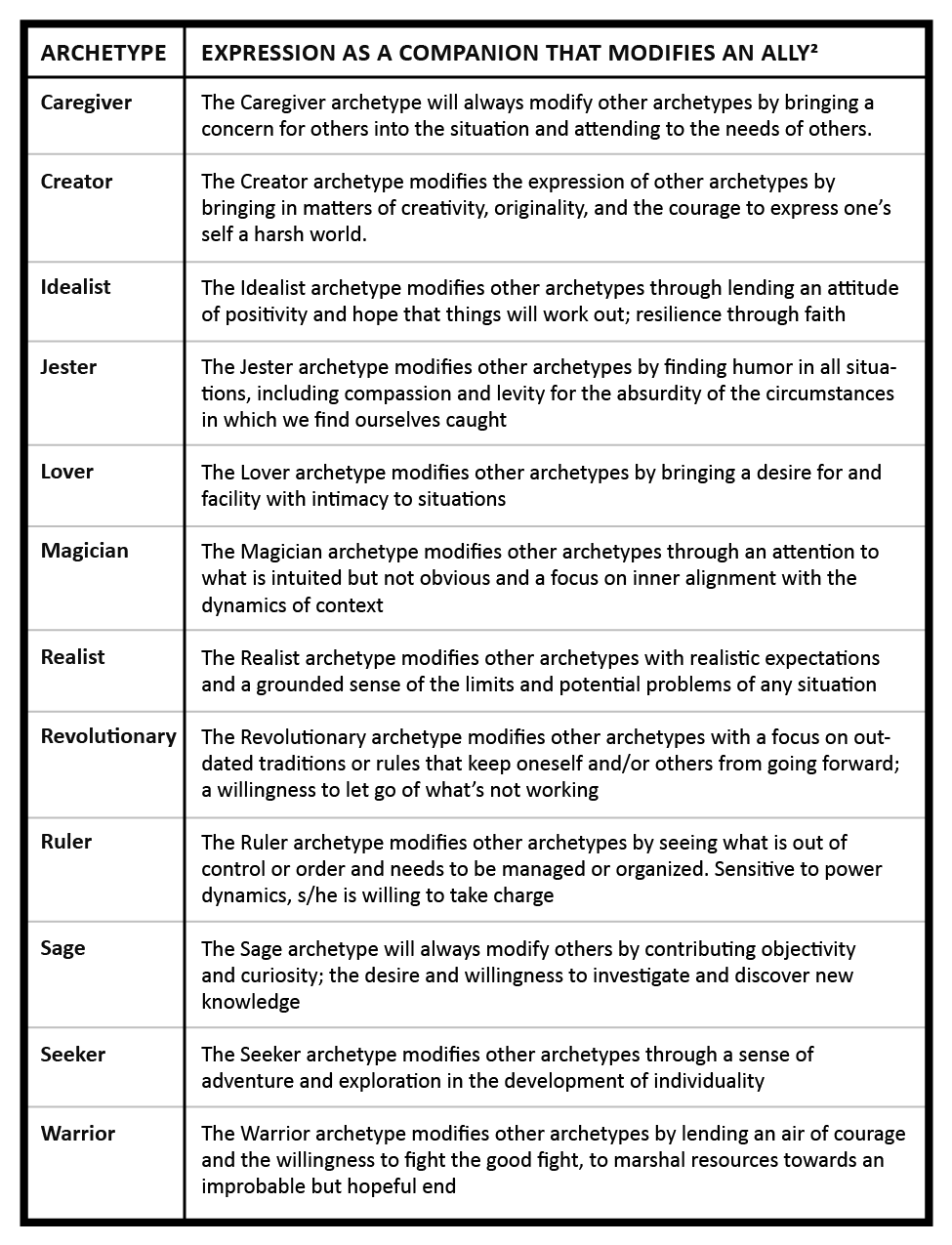Growing With Your Archetypes: Treasure Chest
In the first article of this series, Growing With Your Archetypes, we discussed how to interpret and work with your high-scoring Allies. In this second article, we discuss the mid-range archetypes in the PMAI® Archetype Profile, which we call the Treasure Chest.
I mentioned in the article on Allies that in the PMAI report we select out the top three archetypes, but, you can, and should, verify for yourself which archetypes belong in the Allies category. For some it may be three, for others four or five and others still it may be two. The same evaluation applies to the mid-range archetypes that fall in your Treasure Chest (and also for your low-scoring Blind Spots, which we will work with in the next article). In the PMAI reports, the Treasure Chest is the eight archetypes in-between the three Allies and the one Blind Spot archetype at the bottom. However, you determine how many high-scoring archetypes are Allies and how many are in the low-scoring Blind Spot. The number of Allies and Blind Spots you verify for yourself will determine the number of archetypes in the Treasure Chest.
The Treasure Chest archetypes are characterized as those narratives and gifts that are available to you with relative ease; this category is about potential development. Carol Pearson coined the term archetypal flexibility1 to characterize this quality of mid-range archetypes. Archetype flexibility means we have options as to which narrative to pull up or lean into when we see the need to embody a new story. In the Pearson-Marr system, distinctions are made about why archetypes fall in the mid-range in the Archetype Profile. One is that these archetypal narratives may represent old stories that you lived in different times of your life, such as in college, when your children were young, or in your first career. Because there is a history with them, you have developed some level of skill as well, but they are not energized enough to make it to the top of the Profile at this time. An alternative distinction is that some of the Treasure Chest archetypes represent emerging gifts and stories for you to explore and live. Of course, your Treasure Chest most likely has both types of archetypes and even other distinctions you may discover for yourself.
Carol Pearson calls the Treasure Chest archetypes your sidekicks1 and Hugh Marr identifies them as the companions in your life story hero’s journey.2 These archetypes are in supporting roles to your Allies; they are in the margins of the narratives of your Allies. In other words, your sidekicks and companions are there to support, strengthen, and contribute new skills and attitudes to your powerhouse Allies. This is why the Treasure Chest is about potential—they point to areas where self-growth lies.
The Allies, as discussed in the first article, provide self-growth through working with their shadow material. Our high scoring archetypes are our greatest strengths and weaknesses at the same time. The self-growth in the Treasure Chest is a bit different; it is more about new skills and actions, new stories and ways of perceiving and acting in the world. This can be exciting and frightening at the same time.
The PMAI assessment has been incorporated into a transformational leadership certificate course in a master's program at the University of Tasmania in Australia. In evaluations from the faculty, they noted that through the year, students tended to first focus on their Allies, but, as the year progressed, many students settled into the professional development of their sidekicks. Transformational leadership is built on the idea and practice that as leaders transform themselves internally and externally, they are then able to initiate and facilitate transformation in others. The PMAI is a primary tool in the course for this transformation and it makes sense that students would move to a focus on developing the Treasure Chest. As we face our shadow material or limits of our Allies, developing new skills and gifts readily available as a friendly companion can be a positive support.
To develop your sidekicks, try this:
- Verify for yourself which archetypes are in the Treasure Chest because they are old narratives and which ones are emerging gifts and potentials
- Determine which ones will best support you now (this may be connected to the challenges working with your Allies identifies)
- Look to the table below to understand how your companions contribute to the expression of your Allies
- Read Carol Pearson’s What Stories Are You Living? Discover Your Archetypes—Transform Your Life! (2021), to identify specific characteristics, attitudes, and actions you can take to develop your companions
- Balance work with your Allies with the supportive function of the Treasure Chest for optimal gain

1. Pearson, C. What Stories Are You Living? Discover Your Archetypes—Transform Your Life! Gainesville, FL: CAPT, 2021.
2. Marr, H.K. Finding Your Story: Using Archetypes to Guide Your Personal Journey. Gainesville, FL: CAPT (in press).










_thumb.png)





_thumb.png)
_thumb.png)
_thumb.png)
